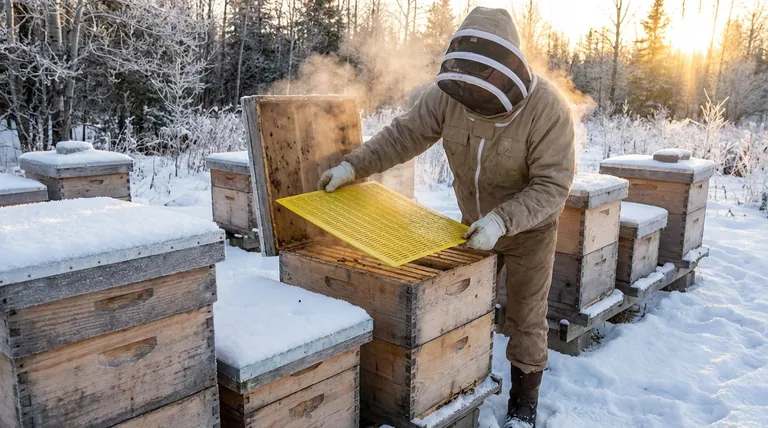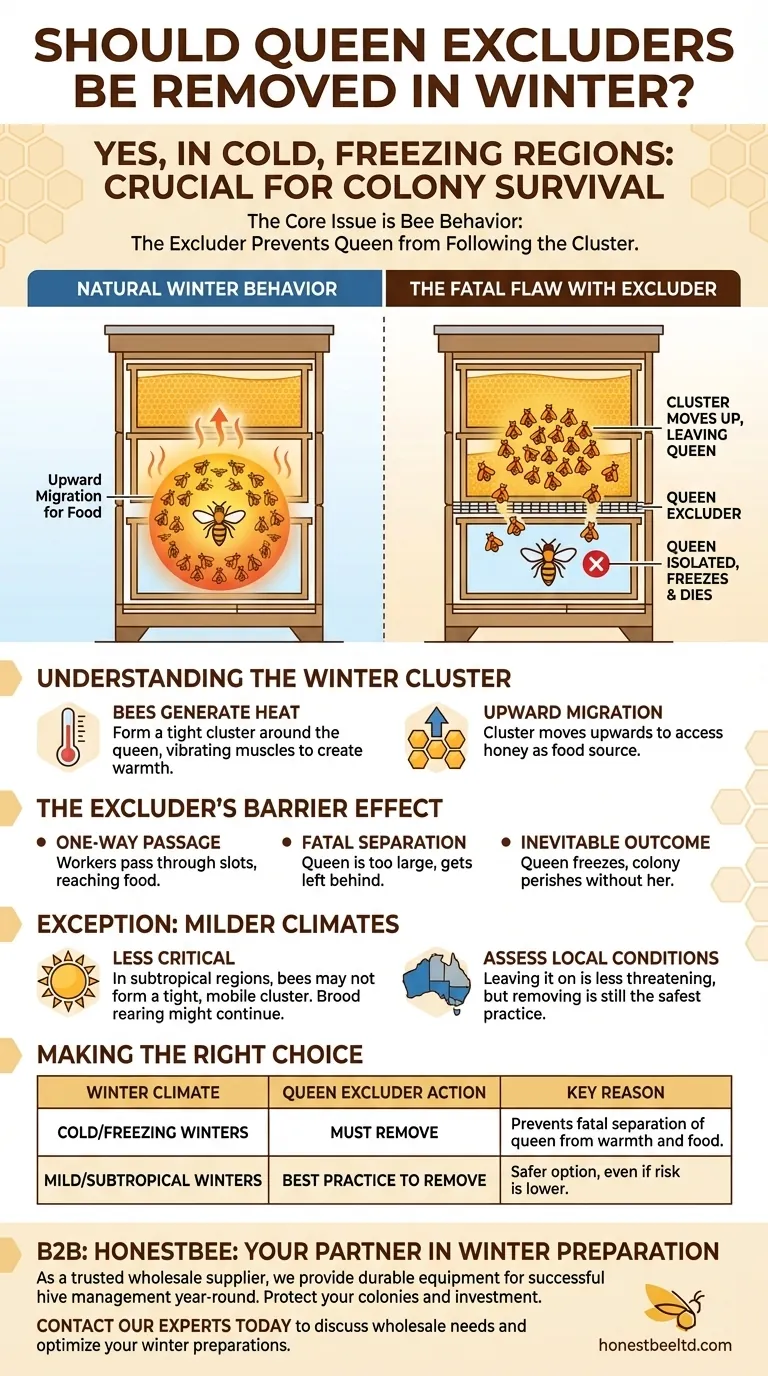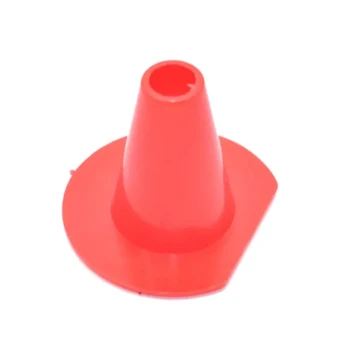Yes, in regions with cold, freezing winters, removing the queen excluder is a critical management step for colony survival. The excluder prevents the queen from moving with the rest of the bees as they migrate upwards to access honey stores, which can lead to her death and the loss of the entire hive.
The core issue is bee behavior, not equipment. A winter bee cluster naturally moves upwards, following its food source. A queen excluder acts as an impassable barrier for the queen, fatally separating her from the life-sustaining warmth and food of her colony.

Understanding the Winter Cluster
To grasp why the queen excluder is so dangerous in winter, we must first understand how a honeybee colony survives freezing temperatures.
How Bees Generate Heat
Bees do not heat the entire hive cavity. Instead, they form a tight winter cluster around the queen to conserve warmth.
By vibrating their wing muscles, the bees in the center of the cluster generate significant heat. The bees on the outer layer of the cluster act as insulation, protecting the bees inside.
The Upward Migration for Food
The cluster is not stationary. As the bees consume the honey in the frames they are covering, the entire cluster will slowly and steadily move upwards throughout the winter.
This upward migration is a natural and essential survival strategy, allowing the colony to continuously access new food reserves stored higher in the hive.
The Excluder's Fatal Flaw
A queen excluder is designed to be a barrier. In winter, this function, which is useful during the nectar flow, becomes a critical system failure.
A One-Way Passage
As the winter cluster moves up, the smaller worker bees can easily pass through the slots in the queen excluder to reach the honey stored in the supers above.
A Fatal Separation
The queen, however, is too large to fit through the excluder. She is left behind on the frames below as the rest of her colony moves upward.
The cluster will not abandon its upward path toward food. This isolates the queen from the warmth and nourishment of her colony.
The Inevitable Outcome
Once separated, the queen will quickly freeze and die. Without a queen, the colony is doomed and will perish before spring, even if it has ample honey stores just a few inches away.
The Exception: Milder Climates
The strict need to remove excluders is directly related to the severity of the winter.
When a Tight Cluster Isn't Formed
In subtropical or temperate regions where winters are mild and temperatures rarely drop below freezing for extended periods, the rules can change.
Bees in these climates may not form a cluster that is as tight or as mobile. Brood rearing may even continue at a low level throughout the year, keeping the queen and bees centered in one area.
Assessing Your Local Conditions
For beekeepers in places like Australia or the southern United States, leaving an excluder on may not pose the same threat. However, removing it is still the safest practice and has no significant downside.
Making the Right Choice for Your Colony
Your decision should be based on a clear assessment of your local climate and the principles of bee behavior.
- If your region experiences freezing winters: Always remove the queen excluder in the fall as a non-negotiable part of your winter preparations.
- If you live in a mild, subtropical, or temperate climate: Removing the excluder is still best practice to prevent any chance of queen isolation, but it is not as universally critical for survival.
Aligning your management practices with the bees' natural survival instincts is the cornerstone of successful beekeeping.
Summary Table:
| Winter Climate | Queen Excluder Action | Key Reason |
|---|---|---|
| Cold/Freezing Winters | Must Remove | Prevents fatal separation of the queen from the winter cluster's warmth and food. |
| Mild/Subtropical Winters | Best Practice to Remove | Safer option, though the risk of isolation is lower if a tight cluster isn't formed. |
Ensure your apiary is prepared for winter with reliable equipment from HONESTBEE.
As a trusted wholesale supplier for commercial apiaries and beekeeping equipment distributors, we provide the durable supplies you need for successful hive management year-round. Protect your investment and your colonies.
Contact our experts today to discuss your wholesale needs and optimize your winter preparations.
Visual Guide

Related Products
- Professional Plastic Queen Excluder for Modern Beekeeping
- Premium Wood Framed Metal Wire Queen Bee Excluder
- High Performance Plastic Queen Excluder for Beekeeping and Apiary Management
- Plastic Queen Bee Excluder for Bee Hive Wholesale
- Beehive Entrance Discs Plastic Bee Entrance Disc for Bee Hives
People Also Ask
- Why are queen excluders recommended for Flow Hives? Prevent Brood Damage for a Clean Harvest
- What is a Queen Excluder and how does it work? Achieve Purer Honey & Better Hive Control
- What are the pros of using queen excluders? Boost Honey Production & Hive Efficiency
- How do queen excluders work in terms of spacing and bee movement? A Guide to Precision Hive Management
- How does a queen excluder work? Master Hive Management for Pure Honey Harvests



















